The ILLUMA-T / LCRD end-to-end laser communications relay system is one small step for NASA, but one giant leap for space communications capabilities. Together with previous and future demonstrations, NASA is showcasing the benefits laser communications systems can have for both near-Earth and deep space exploration.
The goal of these demonstrations is to integrate laser communications as a capability within NASA's space communications networks: the Near Space Network and Deep Space Network.
NASA's first two-way end-to-end laser communications system
by Kendall Murphy and Katherine Schauer , NASA
The Laser Communications Relay Demonstration (LCRD) launched in December 2021. Together, LCRD and ILLUMA-T will complete NASA’s first bi-directional end-to-end laser communications system. Credit: Dave Ryan
NASA is demonstrating laser communications on multiple missions—showcasing the benefits infrared light can have for science and exploration missions transmitting terabytes of important data.
The International Space Station is getting a "flashy" technology demonstration this November. The ILLUMA-T (Integrated Laser Communications Relay Demonstration Low Earth Orbit User Modem and Amplifier Terminal) payload is launching to the International Space Station to demonstrate how missions in low Earth orbit can benefit from laser communications.
Laser communications uses invisible infrared light to send and receive information at higher data rates, providing spacecraft with the capability to send more data back to Earth in a single transmission and expediting discoveries for researchers.
Managed by NASA's Space Communications and Navigation (SCaN) program, ILLUMA-T is completing NASA's first bi-directional, end-to-end laser communications relay by working with the agency's LCRD (Laser Communications Relay Demonstration). LCRD launched in December 2021 and is currently demonstrating the benefits of laser communications from geosynchronous orbit by transmitting data between two ground stations on Earth in a series of experiments.
Some of LCRD's experiments include studying atmospheric impact on laser signals, confirming LCRD's ability to work with multiple users, testing network capabilities like delay/disruption tolerant networking (DTN) over laser links, and investigating improved navigation capabilities.
Once ILLUMA-T is installed on the space station's exterior, the payload will complete NASA's first in-space demonstration of two-way laser relay capabilities.
How it works
ILLUMA-T's optical module is comprised of a telescope and two-axis gimbal which allows pointing and tracking of LCRD in geosynchronous orbit. The optical module is about the size of a microwave and the payload itself is comparable to a standard refrigerator.
✓ ILLUMA-T will relay data from the space station to LCRD at 1.2 gigabits-per-second, then LCRD will send the data down to optical ground stations in California or Hawaii. Once the data reaches these ground stations, it will be sent to the LCRD Mission Operations Center located at NASA's White Sands Complex in Las Cruces, New Mexico. After this, the data will be sent to the ILLUMA-T ground operations teams at the agency's Goddard Space Flight Center in Greenbelt, Maryland. There, engineers will determine if the data sent through this end-to-end relay process is accurate and of high-quality.
"NASA Goddard's primary role is to ensure successful laser communications and payload operations with LCRD and the space station," said ILLUMA-T Deputy Project Manager Matt Magsamen. "With LCRD actively conducting experiments that test and refine laser systems, we are looking forward to taking space communications capabilities to the next step and watching the success of this collaboration between the two payloads unfold."
Once ILLUMA-T transmits its first beam of laser light through its optical telescope to LCRD, the end-to-end laser communications experiment begins. After its experimental phase with LCRD, ILLUMA-T could become an operational part of the space station and substantially increase the amount of data NASA can send to and from the orbiting laboratory.
Transmitting data to relay satellites is no new feat for the space station. Since its completion in 1998 the orbiting laboratory has relied on the fleet of radio frequency relay satellites known as NASA's Tracking and Data Relay Satellites, which are part of the agency's Near Space Network. Relay satellites provide missions with constant contact with Earth because they can see the spacecraft and a ground antenna at the same time.
Laser communications could be a game-changer for researchers on Earth with science and technology investigations aboard the space station. Astronauts conduct research in areas like biological and physical sciences, technology, Earth observations, and more in the orbiting laboratory for the benefit of humanity.
ILLUMA-T could provide enhanced data rates for these experiments and send more data back to Earth at once. In fact, at 1.2 Gbps, ILLUMA-T can transfer the amount of data equivalent to an average movie in under a minute.
SpaceX to launch final piece of NASA's 1st two-way laser communications relay
The final piece to NASA's first two-way laser communication relay system will soon launch to the International Space Station (ISS).
The ILLUMA-T terminal, which is about the size of a large chest, will stow in the trunk of a Cargo Dragon spacecraft as a part of SpaceX's CRS-29 resupply mission, currently scheduled for no earlier than Nov. 5. Once delivered, the terminal will be attached to the space station's exterior.
ILLUMA-T, short for the Integrated LCRD Low-Earth-Orbit User Modem and Amplifier Terminal, is the last piece of hardware needed for NASA's first demonstration of the two-way laser communication technology in space. ILLUMA-T will be used to transmit data through the Laser Communications Relay Demonstration (LCRD) satellite, which will beam that data to optical ground stations in Hawaii and California.
Related: Artemis 2 will use lasers to beam high-definition footage from the moon (video)
LCRD launched into a geosynchronous orbit in Dec. 2021, and has been waiting for ILLUMA-T's installation ever since. Radio transmissions have served as the standard form of communication with spacecraft since Sputnik first graced Earth's orbit more than 65 years ago, and is still used today to communicate with everything from the ISS in low Earth orbit (LEO), to the Perseverance rover on Mars. However, operators are limited in the amount of data they are able to transmit due to radio's longer wavelengths.
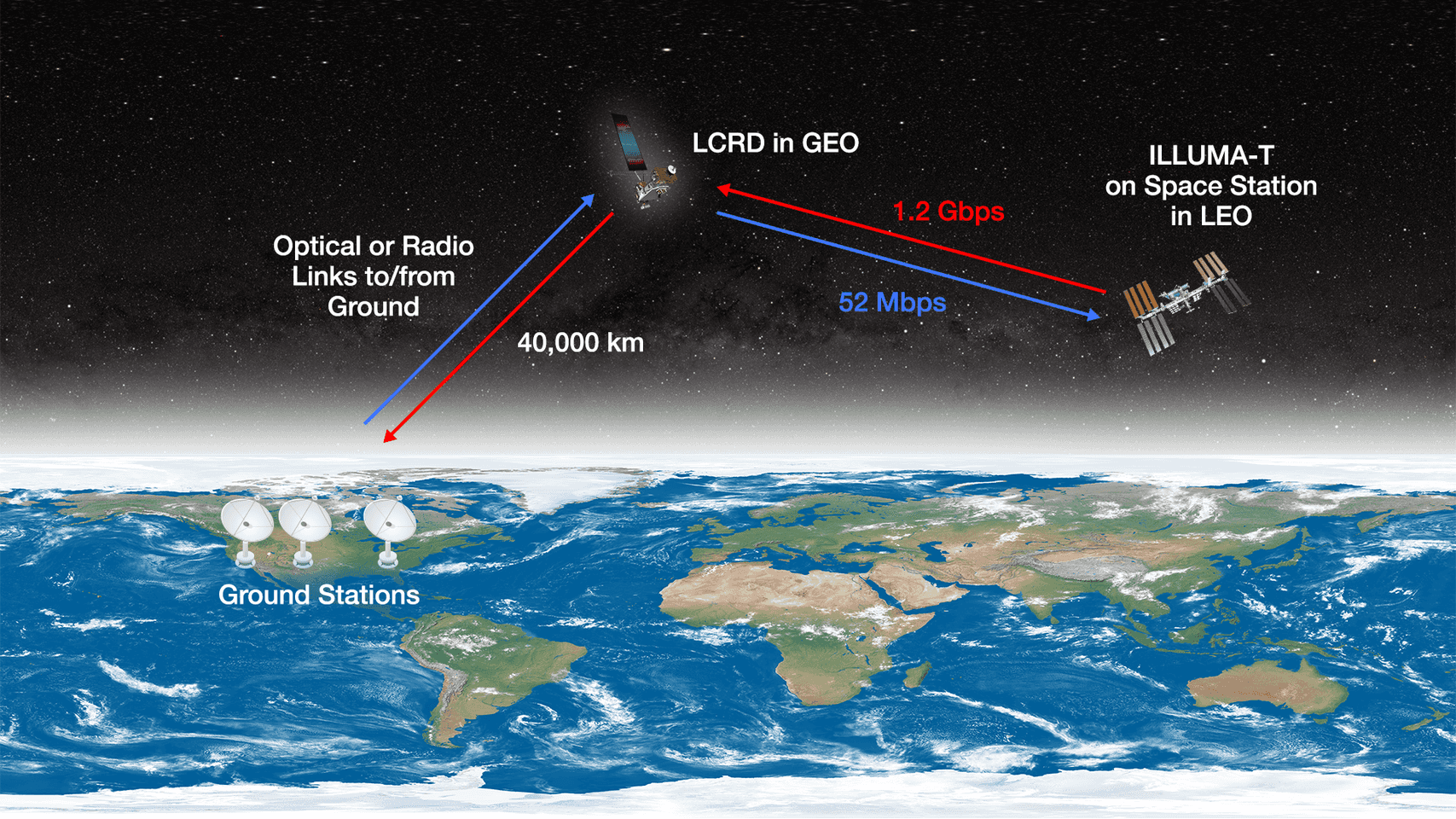
Comparatively, the much shorter, infrared wavelengths of lasers are able to carry amounts of information that are multitudes higher than conventional radio. ILLUMA-T is capable of transmitting more than 1.2 gigabytes per second, which is pretty good even compared to higher home internet rates on Earth.
The components required to build laser communication arrays are also much smaller, lighter and consume less energy than their radio counterparts, allowing future spacecraft greater freedom for scientific instrumentation options in place of bulky communication systems. Because of this, NASA is planning on integrating the technology into vehicles that will venture into deep space.
When applied to missions to the moon and beyond, the higher data rates of laser communications mean larger, high-definition photos and videos, and denser, more complex scientific data.
In fact, the Orion Artemis 2 Optical Communications System (O2O) is being installed on the spacecraft set to launch a crew of four astronauts on a mission around the moon next year. If successful, Artemis 2 astronauts will be able to transmit live footage from cis-lunar space like never before.
O2O, ILLUMA-T and LCRD are all funded through NASA's Space Communications and Navigation (SCaN) program, and were developed through partnerships at the space agency's Goddard Space Flight and Johnson Space Centers, with the Massachusetts Institute of Technology Lincoln Laboratory.
In addition to ILLUMA-T, SpaceX’s CRS-29 Cargo Dragon will carry several thousand pounds of other scientific equipment, food and other supplies for the ISS crew. A Falcon 9 rocket is currently scheduled to launch the haul no earlier than 10:01 p.m. EST Sunday, Nov. 5, from Launch Complex-39A (LC-39A), at NASA's Kennedy Space Center, in Florida.
Join our Space Forums to keep talking space on the latest missions, night sky and more! And if you have a news tip, correction or comment, let us know at: community@space.com.
Next NASA Moon Mission Will Use Out-of-This-World Lasers to Beam Moon Videos
![]()
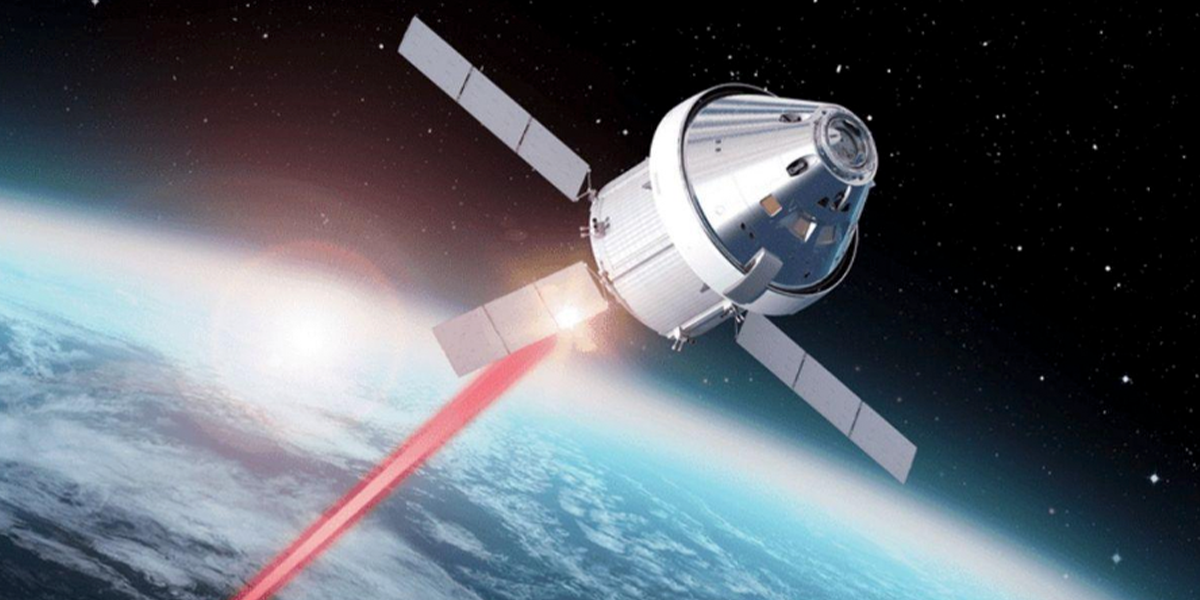
Orion Artemis 2 Optical Communications System in action. (Illustration credit: NASA)
NASA recently named the four astronauts flying on NASA’s Artemis 2 moon mission in 2024. They will be the first people to travel to lunar in more than 50 years. But Artemis 2 will be carrying more than astronauts in its payload.
NASA will send up a new laser communications terminal, the Orion Artemis 2 Optical Communications System (aka the O2O). The NASA goal: to let Earth-bound viewers see the moon in real-time like never before.
Imagine having dial-up internet for years, then upgrading to gigabit fiber optic speeds. That’s why NASA wants to supplement its usual radio signal communications with laser communication technology. When Artemis 2 astronauts use laser communications around the moon to enable faster transmission of images and video, it will be the culmination of a NASA investment in laser communications that started in December 2021.
The Laser Communication Relay Demonstration (LCRD) launched in December 2021 was the agency’s first laser relay. That was followed by the TeraByte InfraRed Delivery (TBIRD) CubeSat launched last year, which reached data transmission rates of 200 gigabits per second.
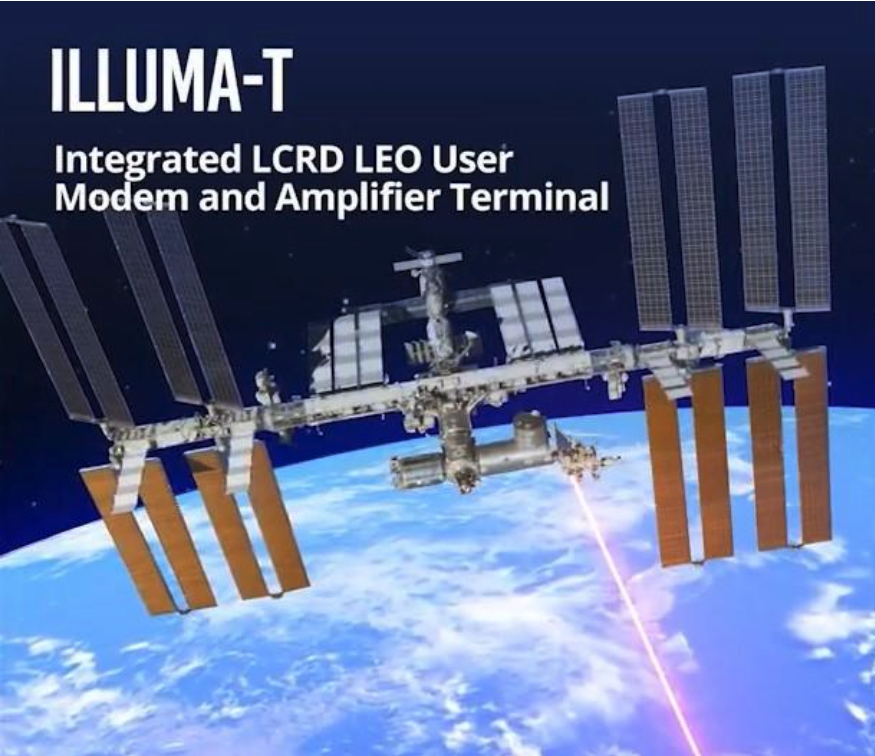
A variety of satellites, the International Space Station and ground stations will work together as a part of NASA’s ILLUMA-T experiment. (Illustration credit: NASA)
This year will see the launch of NASA’s Integrated LCRD Low-Earth-Orbit (LEO) User Modem and Amplifier Terminal (ILLUMA-T). That’s headed to the International Space Station (ISS) to be attached to the exposed facility on the Japanese Experiment Module. ILLUMA-T will relay data back to Earth through LCRD in NASA’s first end-to-end laser relay communications system, laying the further groundwork for the O2O system that will be aboard Orion during Artemis 2.
If all goes according to the O2O plan, you can expect the Artemis 2 crew to show plenty of live or nearly live mission updates with the gorgeous lunar surface visible in Orion’s windows.
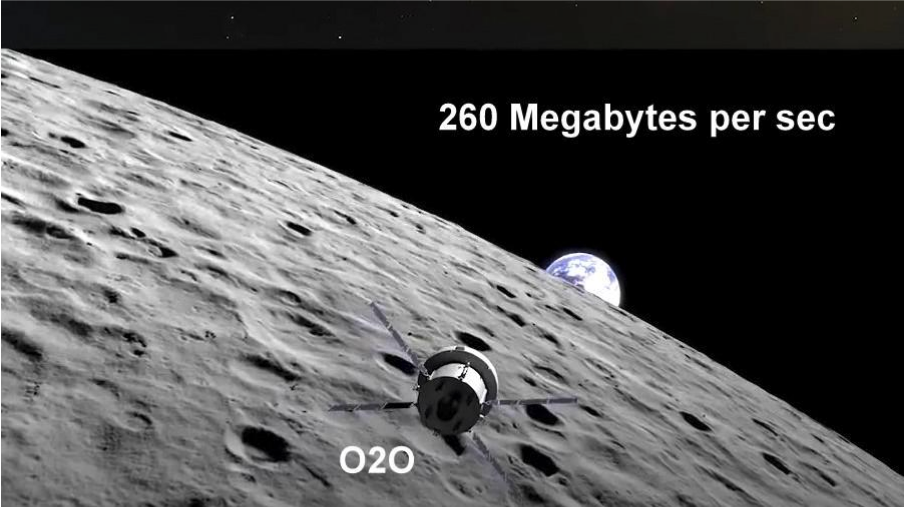
Orion Artemis 2 will beam moon shots with much faster laser communication. [Illustration by NASA.]
The benefit of brilliant out-of-this-world shots to the ProAV industry will be far more than some display companies using these moon shots as demos on their large screens at InfoComm and ISE.
For example, NASA notes in its recent video, these experiments are “only the start of how laser communications are paving the way for advancing our scientific discoveries.” NASA’s investment in the technological innovation and advancement of laser communications will optimize the performance of the industry as well as the product, making laser technology more widely used in downstream (or downspace!) applications.
As space and military applications enrich the industry manufacturers, these manufacturers will be pulled down to Earth by commercial gravity; industries will want to explore how to exploit the benefits as proven by NASA.
Remember that NASA research has brought us CMOS image sensors, memory foam, freeze-dried food, firefighting equipment, emergency “space blankets,” DustBusters, cochlear implants, LZR Racer swimsuits and more. Part of the NASA ethos is to share technology with industry and laser communications may play a future role in corporate private networks or commercial broadcasting. As the race to space becomes privatized, we may see space-to-Earth networks.
Wherever it takes us — when Artemis 2 lifts off for the moon — it will be carrying the hope of a fast-growing laser communications industry that won’t be satisfied with being stuck in space while everyone on Earth still desires faster and better delivery of video communications.
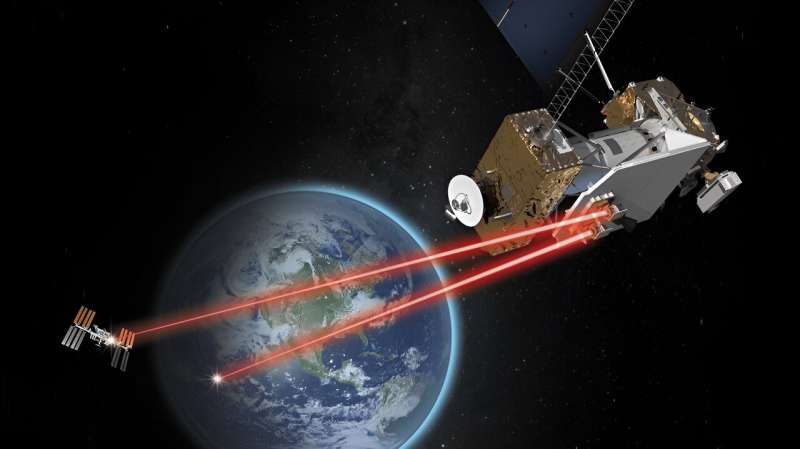


No comments:
Post a Comment